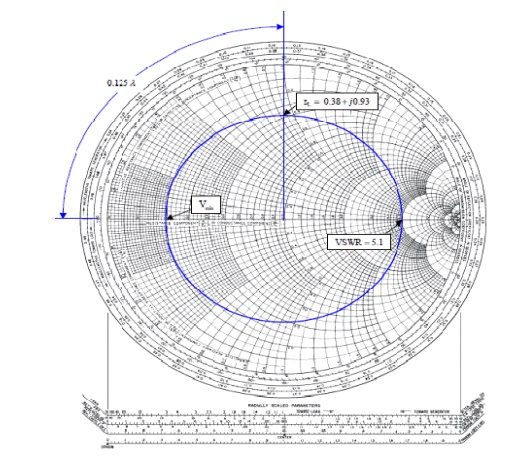

Referring again to Figure 1, you will see some scales around the perimeter of the chart. And Z 4 is the normalized value of 25 – j10. For example, the value of Z 1 is the normalized value of 100 + j35. To do this, you just divide the R and X values by the assigned impedance of 50 Ω, and then plot the normalized value. To plot a specific impedance, you must adjust it to the main impedance. This value is assigned to the center of the chart where R = 1. That impedance is usually the characteristic impedance of a transmission line you’re using or the input and output impedance of a filter or impedance-matching circuit to be created. To use the chart for your own work, you must first set the chart to represent values associated with a specific impedance related to your application. Plotting Values on the Chartįigure 1 shows four examples of impedance plots:Įxamine these examples to be sure you understand them. The Smith chart, as shown, is normalized, thereby permitting you to customize it to your application. The curves above the horizontal line represent inductive-reactance values and the curves below the line represent capacitive reactance. These curves all come together at the R = infinity point at the far right. The remaining curves are parts of circles representing reactance. The R = 1 circle passes through the center of the R line. Resistance values are plotted on the resistance circles, all of which are tangent to one another at the far right of the resistance line. A horizontal line through the center of the main circle represents the resistance with R = 0 at the far left of the line and infinite resistance at the far right. The Smith chart is made up of multiple circles, and segments of circles arranged in a way to plot impedance values in the form of R ± jX (Fig.

If you have avoided the Smith chart in the past, here’s a primer on how to take advantage of it. And as you will find out, it’s useful for working out transmission-line problems and in designing impedance-matching circuits. How he came up with this is an untold story, but he provided a solution to the complex calculations on transmission lines. The intimidating graph, developed by Philip Smith in 1939, is just about as bad as it looks. Most of you have probably heard of the Smith chart. Identify impedance-matching component values from the Smith chart.Determine the impedance of a load at the end of a transmission line.Plot complex impedances on a Smith chart.Members can download this article in PDF format. This article appeared in Electronic Design and has been published here with permission.


 0 kommentar(er)
0 kommentar(er)
